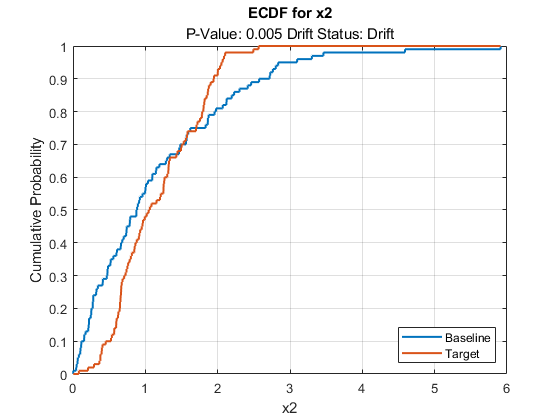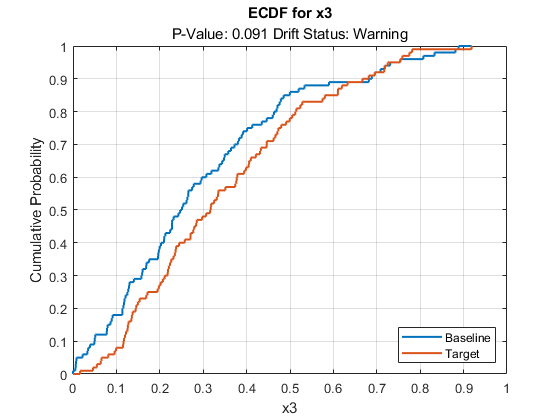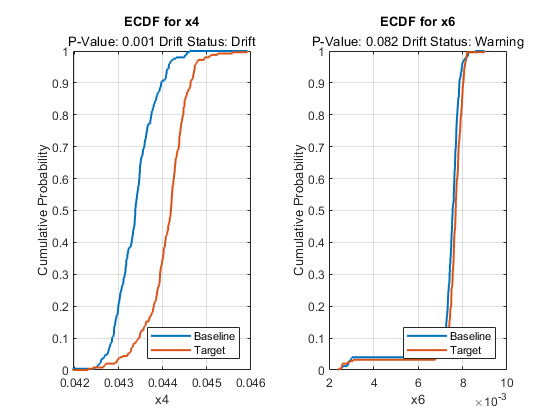plotEmpiricalCDF
Plot empirical cumulative distribution function (ecdf) of a variable specified for data drift detection
Since R2022a
Syntax
Description
plotEmpiricalCDF( plots the
ecdf values of the baseline and target data for the continuous variable with the lowest
p-value. If the data does not contain any continuous variables, then
DDiagnostics)plotEmpiricalCDF does not generate a plot and, instead, returns a
warning.
If you set the value of EstimatePValues to
false in the call to detectdrift, then
plotEmpiricalCDF displays NaN for the
p-value and the drift status.
plotEmpiricalCDF(
plots the ecdf for the variable specified by DDiagnostics,Variable=variable)variable.
St = plotEmpiricalCDF(___)Stair objects St.
Use this to inspect and modify the properties of the object. To learn more, see Stair Properties.
Examples
Input Arguments
Version History
Introduced in R2022a
See Also
detectdrift | DriftDiagnostics | plotDriftStatus | plotHistogram | plotPermutationResults | ecdf | summary | histcounts


